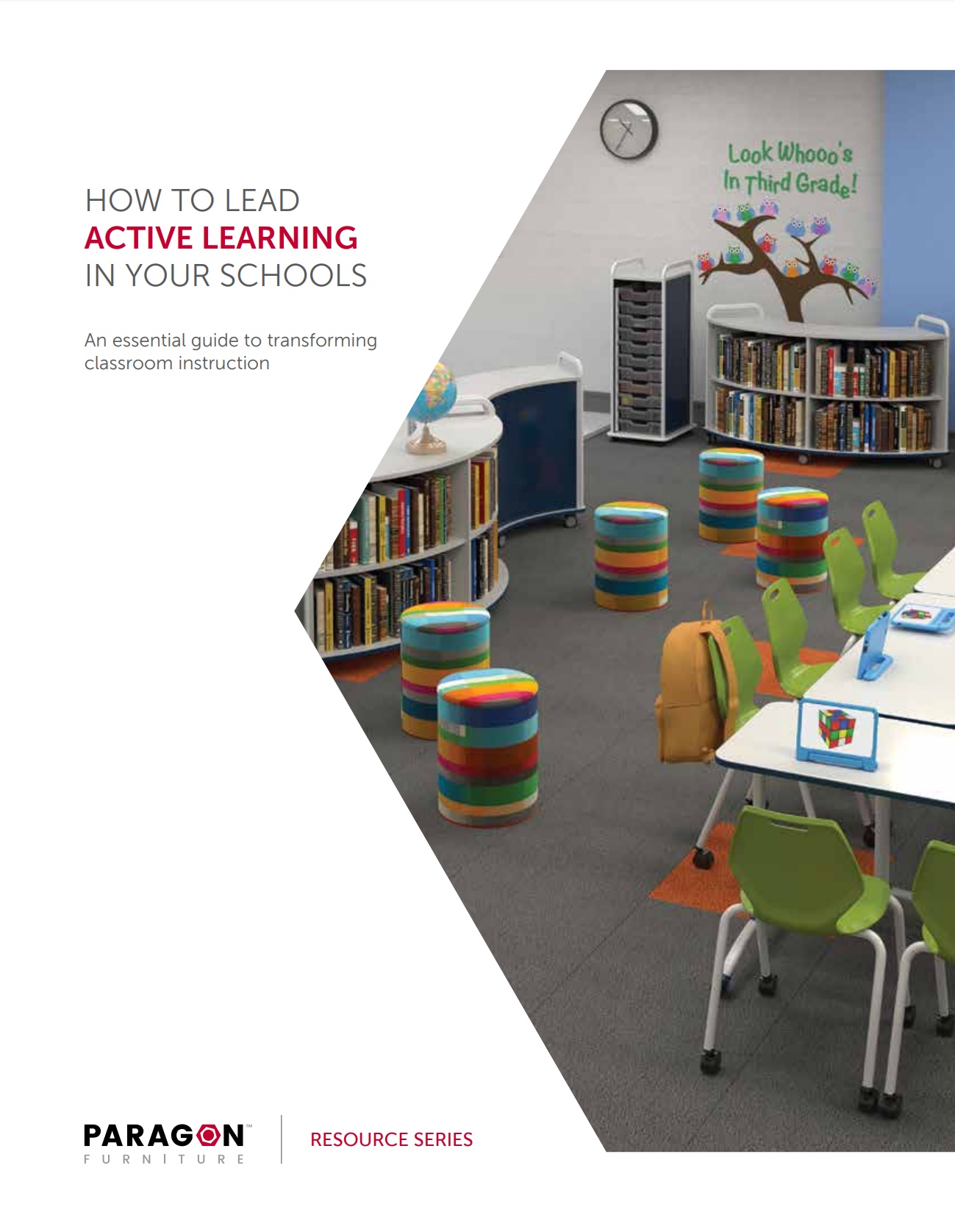SUPPORT TECH-ENABLED LEARNING WITH SMART FURNITURE
CLASSROOM FURNITURE CAN BE A TOOL TO ENHANCE TECH & LEARNING
A decade of research from the national nonprofit group Project Tomorrow tells us that students want access to anytime, anywhere learning opportunities through the use of mobile digital devices. And K-12 leaders have responded in kind, with a growing number of schools creating mobile and digital learning environments. But this shift has important implications for how we design K-12 learning spaces to support more agile learning.

Three-fourths of students believe that every student should have access to a mobile device during the school day to support their learning, according to Project Tomorrow’s latest SpeakUp survey results. Many already have such access: 50% of students say they frequently use a mobile device such as a laptop, tablet, or smartphone to look up information class.
“50% OF STUDENTS SAY THEY FREQUENTLY USE A MOBILE DEVICE SUCH AS A LAPTOP, TABLET, OR SMARTPHONE TO LOOK UP INFORMATION IN CLASS.“
Meanwhile, teachers are using more digital content in their classrooms than ever before, the survey reveals. Sixty-eight percent of teachers say they use videos in their instruction, 48% say they use digital games, 36% use online curriculum, and 27% use animations. All of those figures show increases over the prior year.
In a 2015 survey conducted by Harris Poll and sponsored by Pearson, 78% of elementary school students report that they regularly use a tablet, up from 66% the prior year. Among high school students, 82% use smartphones regularly, up from 75% the year before.
In short, learning is becoming more mobile, multimodal, and technology-rich. It’s also becoming more social, as teachers assign collaborative group projects to help their students develop important 21st-century skills—and K-12 leaders must redesign their learning spaces to reflect these powerful shifts:
- Students need more agile learning environments that support communication, collaboration, and multiple forms of learning, such as modular furniture that easily can be moved around and reconfigured to support various classroom activities.
- Students also need readily accessible power sources to recharge their laptops, tablets, Chromebooks, and other digital devices during the school day.

At the same time technology use is increasing, school buildings are getting older every year—and their capacity to provide enough power decreases. In older school buildings, each classroom generally only has a few power outlets. According to the Government Accountability Office (GAO), nearly half (45%) of U.S. public schools were built between 1950 and 1969—making them at least 47 years old.
WHEN STUDENTS’ MOBILE DEVICES ARE NOT SUFFICIENTLY CHARGED, LEARNING IS INTERRUPTED.
When students’ mobile devices are not sufficiently charged, learning is interrupted. Even when devices are fully powered at the start the school day, that power can dwindle quickly with the kind of constant use so common in today’s classrooms.
One solution is to buy classroom furniture equipped with easily accessible power supplies, so students can charge their mobile devices as they work. Paragon offers several options for classroom tables and soft seating with built-in power outlets, ensuring that students’ devices remain charged and available for use throughout the school day.
What’s more, our student desks include optional tablet kickstands for holding students’ tablets upright as they work—as well as built-in channels to keep power cords from getting in the way.
Download our step-by-step implementation guide to help create active learning spaces!
CLASSROOM DESIGN FILES
Access all of the design resources you need to create a beautiful classroom!
